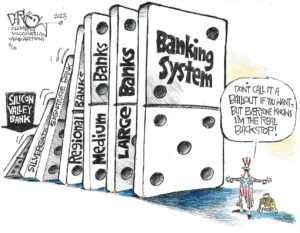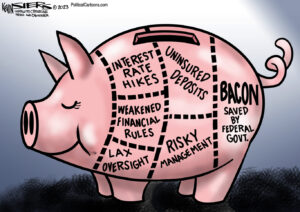Putting the ‘Toxic’ Back in Tarp
The Toxic Asset Relief Program was originally designed to save the banks from their bad bets by purchasing toxic assets, but has since evolved into something of a multipurpose slush fund. Now the Obama administration is getting back to the business of buying junk, elaborating on a plan that sent the Dow tumbling when it was first announced. Update
The Toxic Asset Relief Program was originally designed to save the banks from their bad bets by purchasing toxic assets, but has since evolved into something of a multipurpose slush fund. Now the Obama administration is getting back to the business of buying junk, elaborating on a plan that sent the Dow tumbling when it was first announced.
Update: The market turned out to love the plan, which is maybe a sign that Wall Street’s contortions aren’t the best measure of financial stability.
Your support matters…AP via Google:
The plan on toxic assets will use the resources of the $700 billion bank bailout fund, the Federal Reserve and the Federal Deposit Insurance Corp.
The initiative will seek to entice private investors, including big hedge funds, to participate by offering billions of dollars in low-interest loans to finance the purchases. The government will share the risks if the assets fall further in price.
When [Treasury Secretary Timothy] Geithner released the initial outlines of the administration’s overhaul of the bank rescue program on Feb. 10, the markets took a nosedive. The Dow Jones industrial average plunged by 380 points as investors expressed disappointment about a lack of details.
Independent journalism is under threat and overshadowed by heavily funded mainstream media.
You can help level the playing field. Become a member.
Your tax-deductible contribution keeps us digging beneath the headlines to give you thought-provoking, investigative reporting and analysis that unearths what's really happening- without compromise.
Give today to support our courageous, independent journalists.







You need to be a supporter to comment.
There are currently no responses to this article.
Be the first to respond.